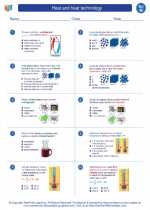What are Slime Molds?
Slime molds are a unique group of organisms that belong to the kingdom Protista. They are not classified as fungi, plants, or animals, but they share characteristics with each of these groups. Slime molds are typically found in damp, shady areas such as forests, where they thrive on decaying organic matter.
Life Cycle of Slime Molds
The life cycle of a slime mold can be divided into two main stages: the plasmodial stage and the fruiting body stage. During the plasmodial stage, slime molds exist as a single large cell with multiple nuclei, known as a plasmodium. This plasmodium moves and feeds by engulfing bacteria, spores, and other organic particles.
When conditions become unfavorable, the plasmodium transforms into a fruiting body, which is a structure that produces spores. These spores are then dispersed into the environment, where they can germinate and give rise to new plasmodia.
Types of Slime Molds
There are two main types of slime molds: plasmodial slime molds and cellular slime molds. Plasmodial slime molds form a large, multinucleate mass during their life cycle, while cellular slime molds exist as individual cells that aggregate to form a multicellular mass when conditions are favorable.
Ecological Importance
Slime molds play an important role in ecosystems by contributing to the decomposition of organic matter. They help break down dead plant material and contribute to nutrient recycling in forest environments.
Study Guide
- What kingdom do slime molds belong to?
- Describe the life cycle of a slime mold.
- What are the two main types of slime molds?
- What role do slime molds play in ecosystems?
[Slime Molds] Related Worksheets and Study Guides:
.◂Science Worksheets and Study Guides Eighth Grade. Heat and heat technology

 Worksheet/Answer key
Worksheet/Answer key
 Worksheet/Answer key
Worksheet/Answer key
 Worksheet/Answer key
Worksheet/Answer key
 Vocabulary/Answer key
Vocabulary/Answer key
